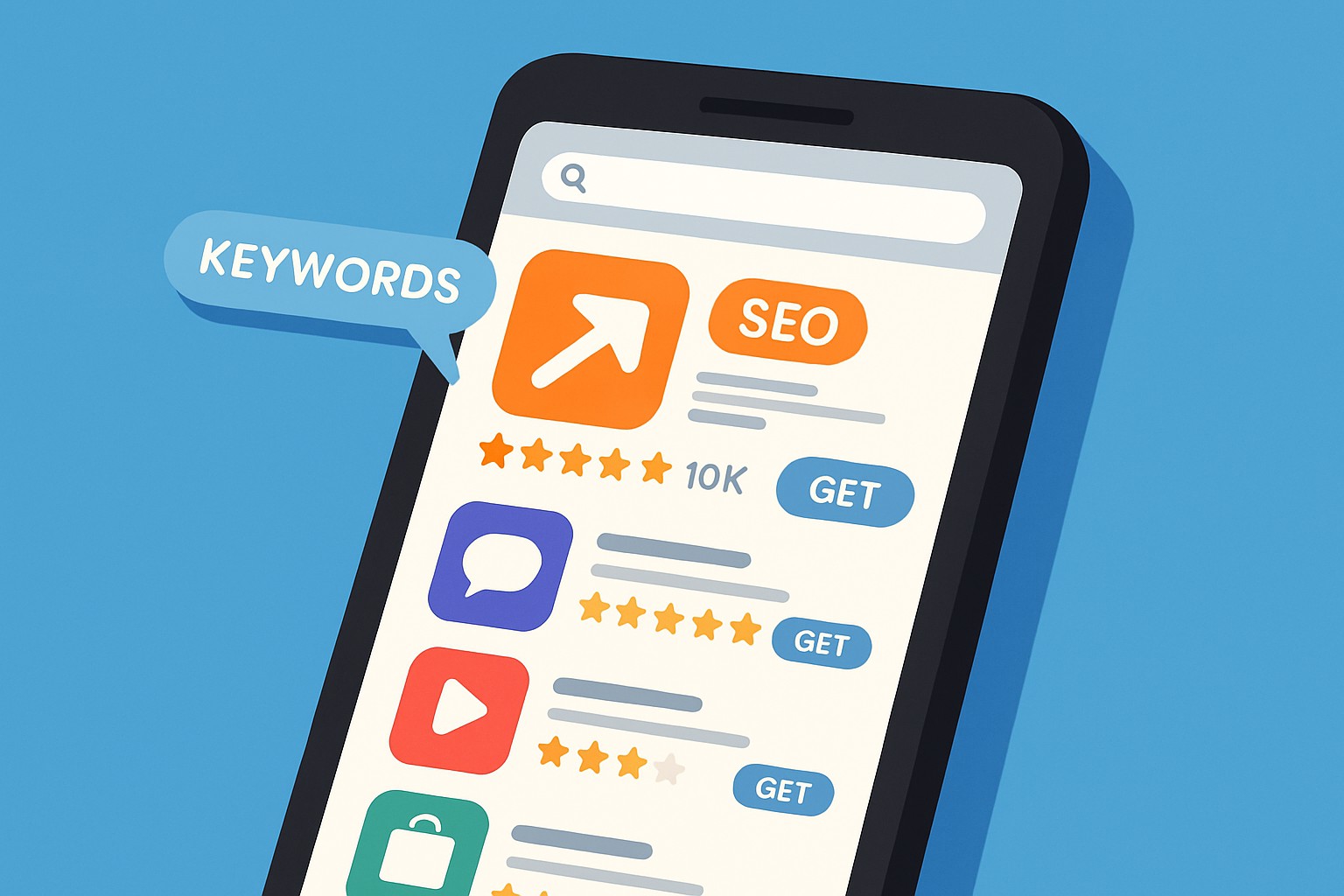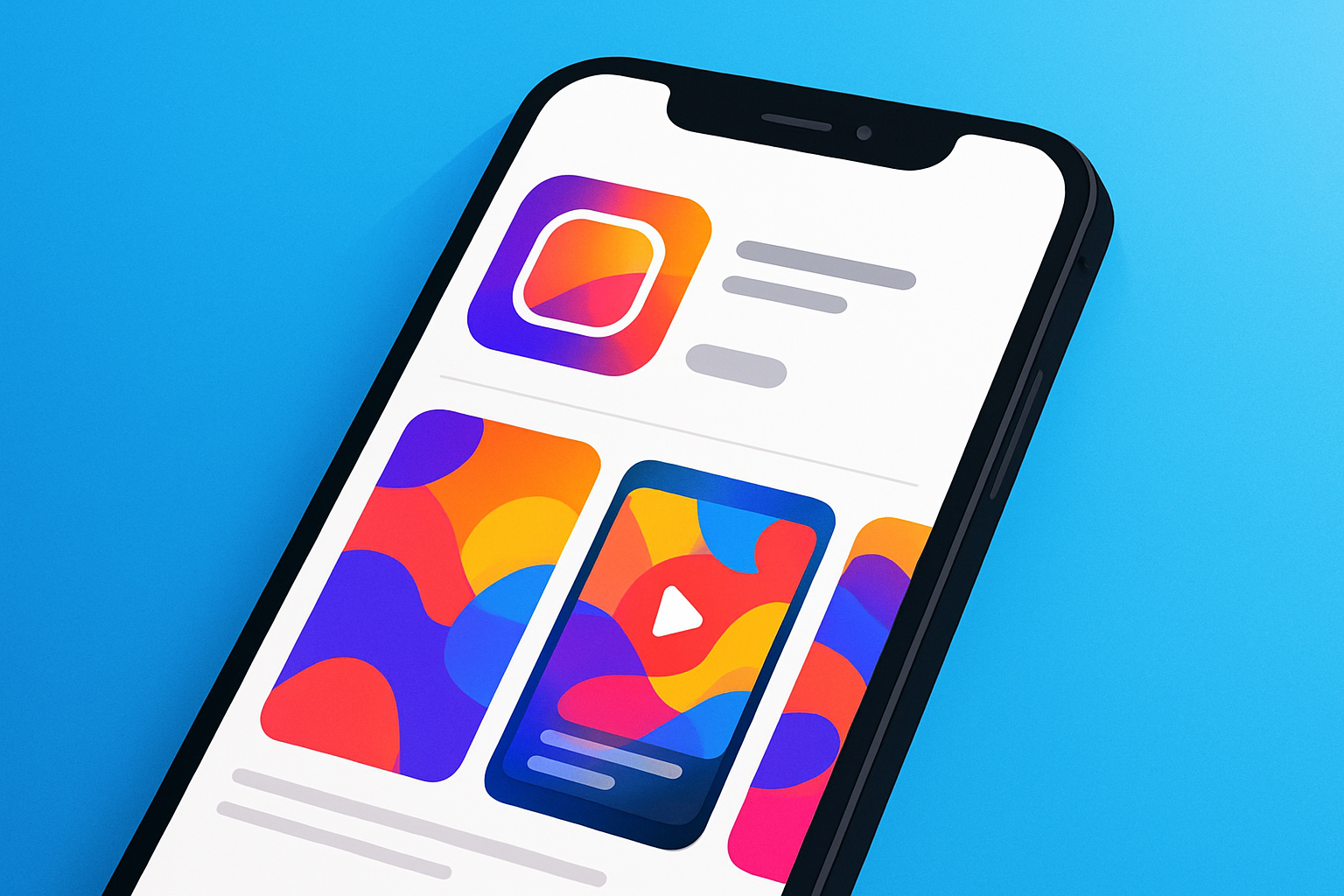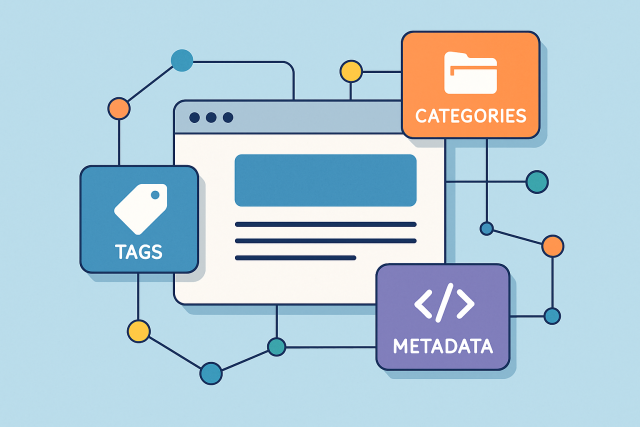
Weebly Search Engine Optimization Tips and Tricks
Learn practical Weebly search engine optimization techniques designed for beginners and small busine...

SEO for apps is key for developers aiming to boost their app's visibility and reel in more downloads while nurturing steady user growth in fiercely competitive markets.
App store algorithms usually size up apps based on relevance, performance and user engagement. App SEO is all about fine-tuning these elements in a natural way.
App Store Optimization (ASO) is about giving your app an extra nudge to stand out in crowded app stores. General SEO focuses on making web content appear more often in search engine results. SEO for apps usually means tweaking metadata, choosing the right keywords and fine-tuning engagement strategies to climb app marketplace rankings.
Apple’s App Store usually zeroes in on keyword relevance within titles and metadata, as well as user ratings and how engaged those users are. Google Play leans a bit more heavily on keyword usage, but also gives a good hard look at performance stats—things like crash rates and how frequently an app gets updated.
Effective keyword research is about really getting the hang of user intent and keeping a sharp eye on what the competition is doing—it’s like a subtle dance between the two. Thankfully, specialized tools come to the rescue by digging into search volume and competition metrics and providing keyword suggestions that can truly make your app’s metadata stand out.
Really get to know what your target audience wants and the pain points your app is designed to solve.
Take a close look at your competitors' apps to find out which keywords they often rank for. There is a lot you can learn by watching carefully.
Use keyword research tools made specifically for app store SEO.
Evaluate your keywords by checking their search volume and difficulty because this helps you focus on the ones most likely to make an impact.
Use a good mix of short-tail and long-tail keywords so you capture both broad traffic and niche, focused searches.
Stay updated on keyword trends and refresh your strategy regularly.
Boost discoverability by crafting app titles and subtitles that slip your main keywords in as naturally as possible. When it comes to descriptions, make sure they clearly highlight the key features and benefits while subtly weaving in those secondary keywords—think of it as a gentle nudge rather than a hard sell.
| Metadata Element | Optimization Tips | Common Mistakes | Impact on Ranking |
|---|---|---|---|
| App Title | Include main keywords and keep it snappy, under 30 characters | Overloading with keywords or using vague, fuzzy titles | High – absolutely vital for that all-important first impression |
| Subtitle | Back up the main title's keywords with a clear, punchy phrase | Repeating keywords over and over, or dragging it out too long | Medium – helps boost relevance and gets more people clicking |
| Description | Write engaging, keyword-rich copy with bullet points to keep it scannable | Bombarding with keywords or tossing in irrelevant fluff | Medium – plays a big role in conversions and keyword relevance |
| Keyword Field (iOS) | Pick relevant, varied keywords while steering clear of duplicates | Cramming in unrelated terms like there is no tomorrow | Medium – aids in search queries, so choose wisely |
| Promo Text | Highlight promotions or updates with well-placed keywords | Leaving it empty or settling for boring, generic phrasing | Low-Medium – can give your conversions a nice little nudge |
| Developer Name | Keep your brand name consistent — it’s how trust builds up | Frequently switching it up can erode that trust factor | Low – impacts brand recognition, so stick to your guns |
| Localization | Translate and tailor metadata carefully for each region | Sloppy translations or ignoring local customs and quirks | Medium – expands your reach and keeps things relevant to different markets |
Visual assets are the first thing users notice and can make or break that key first impression. Giving love to your app icons, screenshots and videos can work wonders for user engagement.

Example of a well-optimized app listing with compelling visual assets that boost user engagement and conversions.
User feedback in the form of reviews and ratings really pulls its weight when it comes to shaping app rankings. Meanwhile, metrics like retention and session length quietly do their part by signaling the app's quality to the algorithms.
Gently prompt users to leave honest ratings at just the right moments—without ever disrupting their flow in the app.
Make it a regular habit to respond to user reviews, addressing concerns thoughtfully and showing genuine appreciation for the positive shout-outs.
Encourage feedback by tossing in some in-app rewards or exclusive deals—little incentives that can really boost the number of reviews.
Stay vigilant with those negative reviews and tackle them professionally, aiming to resolve issues swiftly so users feel heard and the app’s reputation stays strong.
Continuously fine-tune app performance and features to keep users happy and reduce the chances of them jumping ship.
"Handling user reviews is about a lot more than just reputation—it can seriously sway your app's visibility and how many people actually download it. Keeping a close eye on user feedback and staying engaged often paves the way for steady, if sometimes slow, improvements in your rankings." – ASO Expert Lydia Chen
An app's technical quality—think speedy load times and minimal crashes while sticking to important store guidelines—really makes a difference for search rankings.
When it comes to tackling localization and internationalization, there’s more to it than just swapping out words. It’s about catching the right cultural vibe and making sure your content feels like it was tailor-made for each audience. That said, nailing this process can be a bit of an art, combined with some solid tech smarts. Whether you’re dipping your toes or going all in, understanding the subtle differences between these two approaches can save you a heap of trouble down the line.
Tuning app metadata, keywords and visuals to fit different languages and regions can really give your global reach a nice boost. It also helps improve those all-important rankings. Thoughtful localization isn’t just about translation. It involves capturing little cultural details that resonate better with diverse audiences.
Measuring ASO success usually means keeping a close eye on key KPIs like keyword rankings and organic downloads. It also includes conversion rates and user engagement. Tools like Moz Pro and Mangools can be surprisingly handy. They offer helpful insights by tracking your rankings and competitor benchmarks as well as keyword performance.
| KPI | Description | Tracking Tools | Frequency of Monitoring | Optimization Actions |
|---|---|---|---|---|
| Keyword Rankings | The spot your targeted keywords snag in app stores | Moz Pro, KWFinder | Weekly | Regularly refresh metadata and keywords to keep pace with ever-changing trends |
| Organic Downloads | Count of app installs that happen without paid ads | App Store Connect | Daily/Weekly | Give your app listing a little polish and ramp up user acquisition efforts |
| Conversion Rate | Portion of store visitors who actually hit that download button | Google Play Console | Weekly | Spruce up visuals and descriptions to make a lasting impression |
| User Ratings | The average score coupled with how many individuals left reviews | App Annie, Mangools | Weekly | Engage by replying to reviews and keep pushing app improvements |
| Retention Rate | Percentage of users sticking around and still using the app over time | Firebase, Mixpanel | Monthly | Zero in on smooth user experience and fresh feature updates |
| Crash Rate | How often your app takes an unexpected nap | Crashlytics | Real-time | Rush to squash bugs and amp up app stability |
Many apps stumble when it comes to ranking often because they lean too heavily on keywords or turn a blind eye to user feedback. They also suffer from weak metadata or skip the ongoing grind of optimization.
"Some of the biggest ASO mistakes sneak in when people either ignore those vital user signals or get a little too carried away with over-optimization tactics. In my experience, lasting success tends to come from genuine engagement and steady, thoughtful tweaks rather than quick fixes or gimmicks." – Digital Marketing Strategist Mark Rivera
Following a clear roadmap for SEO for apps really paves the way for steady improvements in rankings. Quick fixes address the most urgent problems. Medium-term steps boost overall optimization and long-term plans are the secret sauce for lasting growth.
Give your current app listing, keywords and user feedback a thorough once-over. You’d be surprised what little details can slip through the cracks.
Refresh your metadata with the latest keyword research and app store guidelines to keep things sharp and relevant.
Give your visuals a facelift by sprucing up icons and screenshots to catch the eye and make your app stand out.
Make it a habit to regularly gather and analyze user reviews and respond to them. It’s a great way to boost ratings and earn users’ trust.
Adopt localization strategies that help tap into new markets because speaking the local language never hurts.
Keep a close watch on performance metrics and be ready to tweak your strategies as needed. Staying flexible is key to sustained growth.
17 articles published
Known for her strategic acumen and ability to distill complex concepts into actionable frameworks, Raven Merriweather empowers businesses to navigate the intricacies of Internet Marketing with confidence and clarity.
Read Pages
Learn practical Weebly search engine optimization techniques designed for beginners and small busine...

Explore the detailed SEO battle between WIX and WordPress to find out which platform drives better s...

Unlock the power of taxonomy SEO to organize your site content strategically. This guide covers foun...

Explore essential single page SEO strategies that improve search rankings by optimizing content, tec...